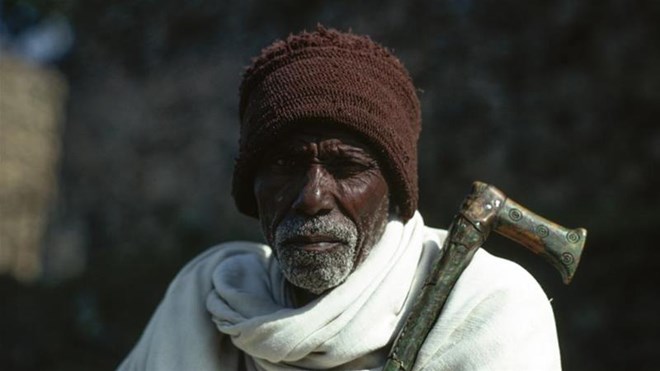
Wednesday January 11, 2017

An analysis on what the rising ethnic nationalism among the historically powerful Amhara means for the country's future.
Etenesh* sits alone on a worn cow skin in her mud-walled home in Amba Giorgis, a small Ethiopian market town in the northerly Amhara region. Her husband, a merchant, was arrested early in November, due to his alleged participation in anti-government protests over the last few months.
"He was taken to a military camp," says Etenesh, a mother of two who sells coffee to farmers from her shack. "I know that because he called me twice."
She does not know when, or if, he will come back, but she does know that life without the family's primary breadwinner is tough. "It's just me now, trying to provide for my kids."
Talk of arrests is prevalent in Amba Giorgis, which is part of the North Gondar district experiencing clashes between armed farmers and the military.
On the edge of town, government soldiers man a new checkpoint. They moved into a road construction camp, following the declaration of a sweeping state of emergency on October 8 in response to the unrest among Ethiopia's two largest ethnic groups: the Oromo, who make up around one-third of the population, and the Amhara.
On July 31, residents of Gondar, which is around 700km north of the capital, Addis Ababa, came out to demonstrate amid a long-standing territorial dispute with the neighbouring Tigray region. During Ethiopia's transition from a unitary to a federal state in the early 1990s, some Amhara claim they lost territory to Tigrayans when the country was restructured along ethnolinguistic lines.
The demonstrations have been used as a platform to voice discontent over alleged government repression of the Amhara as well as to promote a budding ethnic nationalism among them. The Amhara are the second-largest ethnic group in Ethiopia, constituting 27 percent in the country of nearly 100 million people.
The ruling coalition, the Ethiopian Peoples' Revolutionary Democratic Front (EPRDF), is a grouping of four ethnic-based parties, including Oromo, Amhara and Tigray parties. The Tigray People's Liberation Front ( TPLF), is the founder of the EPRDF and is perceived to be the powerhouse of the coalition, even though Tigrayans represent just six percent of the population.
Pro-TPLF commentators believe that the Amhara wing of the coalition, the Amhara National Democratic Movement, gave its blessing to the Gondar protest as part of an attempt to reduce TPLF dominance. But events gathered momentum, when the sentiments on display in Gondar reverberated in the following weeks, as thousands of ethnic Amhara hit the streets in towns like Amba Giorgis.
During the protests, slogans reflected a sense of victimisation.
"Being an Amhara is not a crime," read one. "Respect Amharaness," said another.
Properties associated with the ruling coalition were attacked, and the main road leading to the tourist-magnet Simien Mountains was blockaded.
The government's emergency decree, which, among other things, bans most political activity, including watching opposition satellite channels, has seen tens of thousands detained on suspicion of being party to the unrest.
"Some 11,607 individuals have so far been detained in six prisons, of which 347 are female, in connection with the state of emergency declared in the country," official Taddesse Hordofa said in a televised statement on November 12 after the state of emergency was implemented.
The measure has returned a degree of order to Ethiopia. However, underlying issues remain.